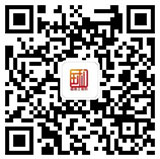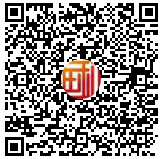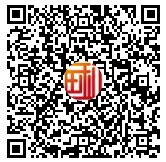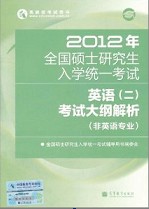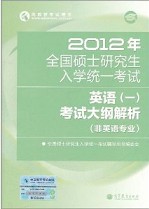研究生历年考试阅读理解英语真题(二)
Text 3
The US$3-million Fundamental physics prize is indeed an interesting experiment, as Alexander Polyakov said when he accepted this year’s award in March. And it is far from the only one of its type. As a News Feature article in Nature discusses, a string of lucrative awards for researchers have joined the Nobel Prizes in recent years. Many, like the Fundamental Physics Prize, are funded from the telephone-number-sized bank accounts of Internet entrepreneurs. These benefactors have succeeded in their chosen fields, they say, and they want to use their wealth to draw attention to those who have succeeded in science.
What’s not to like? Quite a lot, according to a handful of scientists quoted in the News Feature. You cannot buy class, as the old saying goes, and these upstart entrepreneurs cannot buy their prizes the prestige of the Nobels, The new awards are an exercise in self-promotion for those behind them, say scientists. They could distort the achievement-based system of peer-review-led research. They could cement the status quo of peer-reviewed research. They do not fund peer-reviewed research. They perpetuate the myth of the lone genius.
The goals of the prize-givers seem as scattered as the criticism. Some want to shock, others to draw people into science, or to better reward those who have made their careers in research.
As Nature has pointed out before, there are some legitimate concerns about how science prizes—both new and old—are distributed. The Breakthrough Prize in Life Sciences, launched this year, takes an unrepresentative view of what the life sciences include. But the Nobel Foundation’s limit of three recipients per prize, each of whom must still be living, has long been outgrown by the collaborative nature of modern research—as will be demonstrated by the inevitable row over who is ignored when it comes to acknowledging the discovery of the Higgs boson. The Nobels were, of course, themselves set up by a very rich individual who had decided what he wanted to do with his own money. Time, rather than intention, has given them legitimacy.
As much as some scientists may complain about the new awards, two things seem clear. First, most researchers would accept such a prize if they were offered one. Second, it is surely a good thing that the money and attention come to science rather than go elsewhere, It is fair to criticize and question the mechanism—that is the culture of research, after all—but it is the prize-givers’ money to do with as they please. It is wise to take such gifts with gratitude and grace.
31. The Fundamental Physics Prize is seen as
[A]a symbol of the entrepreneurs’ wealth.
[B]a possible replacement of the Nobel Prizes.
[C]an example of bankers’ investments.
[D]a handsome reward for researchers.
32. The critics think that the new awards will most benefit
[A]the profit-oriented scientists.
[B]the founders of the new awards.
[C]the achievement-based system.
[D]peer-review-led research.
33. The discovery of the Higgs boson is a typical case which involves
[A]controversies over the recipients’ status.
[B]the joint effort of modern researchers.
[C]legitimate concerns over the new prizes.
[D]the demonstration of research findings.
34. According to Paragraph 4,which of the following is true of the Nobels?
[A]Their endurance has done justice to them.
[B]Their legitimacy has long been in dispute.
[C]They are the most representative honor.
[D]History has never cast doubt on them.
35.The author believes that the now awards are
[A]acceptable despite the criticism.
[B]harmful to the culture of research.
[C]subject to undesirable changes.
[D]unworthy of public attention.
Text 4
“The Heart of the Matter,” the just-released report by the American Academy of Arts and Sciences (AAAS), deserves praise for affirming the importance of the humanities and social sciences to the prosperity and security of liberal democracy in America. Regrettably, however, the report’s failure to address the true nature of the crisis facing liberal education may cause more harm than good.
In 2010, leading congressional Democrats and Republicans sent letters to the AAAS asking that it identify actions that could be taken by “federal, state and local governments, universities, foundations, educators, individual benefactors and others” to “maintain national excellence in humanities and social scientific scholarship and education.” In response, the American Academy formed the Commission on the Humanities and Social Sciences. Among the commission’s 51 members are top-tier-university presidents, scholars, lawyers, judges, and business executives, as well as prominent figures from diplomacy, filmmaking, music and journalism.
The goals identified in the report are generally admirable. Because representative government presupposes an informed citizenry, the report supports full literacy; stresses the study of history and government, particularly American history and American government; and encourages the use of new digital technologies. To encourage innovation and competition, the report calls for increased investment in research, the crafting of coherent curricula that improve students’ ability to solve problems and communicate effectively in the 21st century, increased funding for teachers and the encouragement of scholars to bring their learning to bear on the great challenges of the day. The report also advocates greater study of foreign languages, international affairs and the expansion of study abroad programs.
Unfortunately, despite 2? years in the making, "The Heart of the Matter" never gets to the heart of the matter: the illiberal nature of liberal education at our leading colleges and universities. The commission ignores that for several decades America’s colleges and universities have produced graduates who don’t know the content and character of liberal education and are thus deprived of its benefits. Sadly, the spirit of inquiry once at home on campus has been replaced by the use of the humanities and social sciences as vehicles for publicizing “progressive,” or left-liberal propaganda.
Today, professors routinely treat the progressive interpretation of history and progressive public policy as the proper subject of study while portraying conservative or classical liberal ideas—such as free markets and self-reliance—as falling outside the boundaries of routine, and sometimes legitimate, intellectual investigation.
The AAAS displays great enthusiasm for liberal education. Yet its report may well set back reform by obscuring the depth and breadth of the challenge that Congress asked it to illuminate.
36. According to Paragraph 1, what is the author’s attitude toward the AAAS’s report?
[A] Critical
[B] Appreciative
[C] Contemptuous
[D] Tolerant
37. Influential figures in the Congress required that the AAAS report on how to
[A] retain people’s interest in liberal education
[B] define the government’s role in education
[C] keep a leading position in liberal education
[D] safeguard individuals’ rights to education
38. According to Paragraph 3, the report suggests
[A] an exclusive study of American history
[B] a greater emphasis on theoretical subjects
[C] the application of emerging technologies
[D] funding for the study of foreign languages
39. The author implies in Paragraph 5 that professors are
[A] supportive of free markets
[B] cautious about intellectual investigation
[C] conservative about public policy
[D] biased against classical liberal ideas
40. Which of the following would be the best title for the text?
[A] Ways to Grasp “The Heart of the Matter”
[B] Illiberal Education and “The Heart of the Matter”
[C] The AAAS’s Contribution to Liberal Education
[D] Progressive Policy vs. Liberal Education
Part B
Directions:
The following paragraphs are given in a wrong order. For Questions 41-45, you are required to reorganize these paragraphs into a coherent text by choosing from the list A-G and filling them into the numbered boxes. Paragraphs A and E have been correctly placed Mark your answers on the ANSWER SHEET (10 points)
[A] Some archaeological sites have always been easily observable—for example, the Parthenon in Athens, Greece, the pyramids of Giza in Egypt; and the megaliths of Stonehenge in southern England. But these sites are exceptions to the norm. Most archaeological sites have been located by means of careful searching, while many others have been discovered by accident. Olduvai Gorge, an early hominid site in Tanzania, was found by a butterfly hunter who literally fell into its deep valley in 1911. Thousands of Aztec artifacts came to light during the digging of the Mexico City subway in the 1970s.
[B]In another case, American archaeologists Rene Million and George Cowgill spent years systematically mapping the entire city of Teotihuacan in the Valley of Mexico near what is now Mexico City. At its peak around AD 600, this city was one of the largest human settlements in the world. The researchers mapped not only the city’s vast and ornate ceremonial areas, but also hundreds of simpler apartment complexes where common people lived.
[C] How do archaeologists know where to find what they are looking for when there is nothing visible on the surface of the ground? Typically, they survey and sample (make test excavations on) large areas of terrain to determine where excavation will yield useful information. Surveys and test samples have also become important for understanding the larger landscapes that contain archaeological sites.
[D] Surveys can cover a single large settlement or entire landscapes. In one case, many researchers working around the ancient Maya city of Copan, Honduras, have located hundreds of small rural villages and individual dwellings by using aerial photographs and by making surveys on foot. The resulting settlement maps show how the distribution and density of the rural population around the city changed dramatically between AD 500 and 850, when Copan collapsed.
[E] To find their sites, archaeologists today rely heavily on systematic survey methods and a variety of high-technology tools and techniques. Airborne technologies, such as different types of radar and photographic equipment carried by airplanes or spacecraft, allow archaeologists to learn about what lies beneath the ground without digging. Aerial surveys locate general areas of interest or larger buried features, such as ancient buildings or fields.
[F] Most archaeological sites, however, are discovered by archaeologists who have set out to look for them. Such searches can take years. British archaeologist Howard Carter knew that the tomb of the Egyptian pharaoh Tutankhamun existed from information found in other sites. Carter sifted through rubble in the Valley of the Kings for seven years before he located the tomb in 1922. In the late 1800s British archaeologist Sir Arthur Evan combed antique dealers’ stores in Athens, Greece. He was searching for tiny engraved seals attributed to the ancient Mycenaean culture that dominated Greece from the 1400s to 1200s BC. Evans’s interpretations of these engravings eventually led him to find the Minoan palace at Knossos (Knossós) on the island of Crete, in 1900.
[G] Ground surveys allow archaeologists to pinpoint the places where digs will be successful. Most ground surveys involve a lot of walking, looking for surface clues such as small fragments of pottery. They often include a certain amount of digging to test for buried materials at selected points across a landscape. Archaeologists also may locate buried remains by using such technologies as ground radar, magnetic-field recording, and metal detectors. Archaeologists commonly use computers to map sites and the landscapes around sites. Two and three-dimensional maps are helpful tools in planning excavations, illustrating how sites look, and presenting the results of archaeological research.
更多试题详情请咨询国和网校官网









